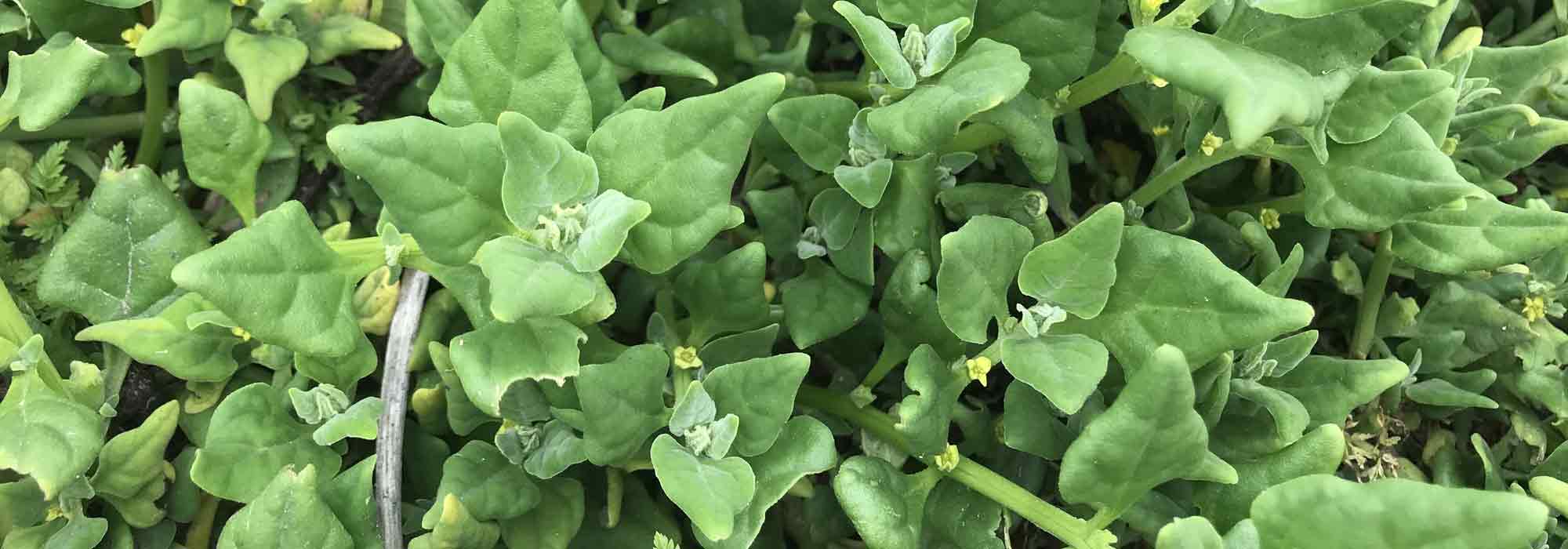
Tetragon: sowing, cultivation, harvest
Contents
Tetragon in a nutshell
- Tetragonia is a vigorous annual vegetable plant from the Aizoaceae family
- Commonly known as “New Zealand spinach,” Tetragonia has no botanical relation to spinach
- Rich in vitamins and minerals, Tetragonia is a health and weight-loss ally
- It is easy to grow in sunny conditions, in slightly acidic, deep, rich, and light soil
- A leafy vegetable with a briny flavour, it is increasingly sought after by top chefs in their recipes
- The leaves of Tetragonia resemble those of species from the genus Datura, which are toxic
A word from our expert
The horned tetragon is often referred to as the “New Zealand spinach” due to its obvious resemblance to spinach. However, despite their similarities, the tetragon is indeed a distinct species, belonging to the Aizoaceae family. Among the features that set them apart, this vigorous annual vegetable plant offers large fleshy, triangular leaves with a distinctive briny flavour.
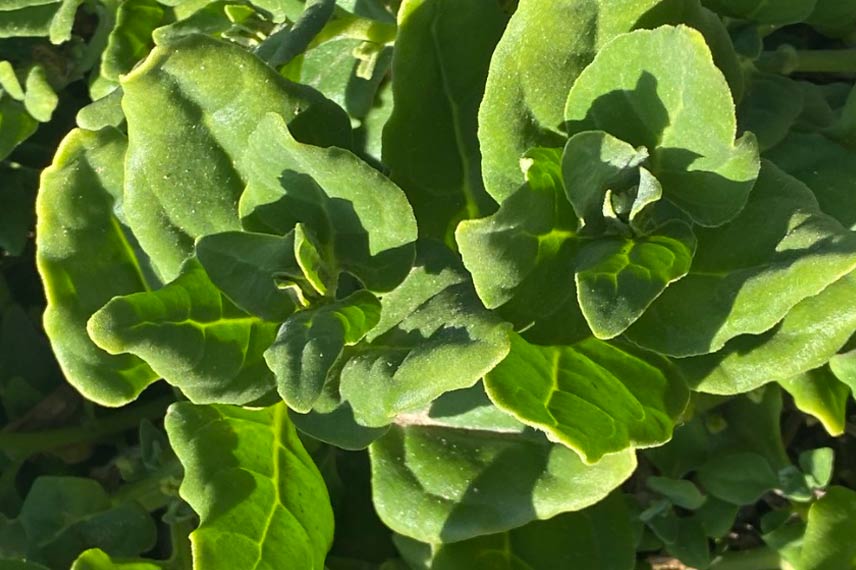
Foliage of horned tetragon | © Dana L. Brown – Flickr
Tetragonia tetragonoides is a rare leaf vegetable in France, yet highly valued in Anglo-Saxon countries. In recent years, however, the tetragon seems to be increasingly appealing to gardeners, particularly among beginners.
Its briny taste is also highly sought after by top chefs who are eager to incorporate it into their recipes. The horned tetragon is thus used raw or cooked in various dishes, prepared in salads, sautéed, or even steamed.
The New Zealand spinach is a vegetable rich in minerals as well as vitamin C.
Easy to grow and suitable for beginner gardeners, the horned tetragon is a heat-resistant plant, and even withstands drought.
Be careful not to confuse the horned tetragon with species of the genus Datura, which are toxic and potentially deadly. Their leaves indeed resemble those of the tetragon.
Description and botany
Botanical data
- Latin name Tetragonia tetragonoides
- Family Aizoaceae
- Common name New Zealand spinach, horned tetragonia
- Flowering from July
- Height 1 m
- Exposure sunny
- Soil type rich in humus, cool, light, deep, not too acidic
- Hardiness frost-sensitive
Tetragonia, in Latin Tetragonia tetragonoides, is also known by the names horned tetragonia and New Zealand spinach.
Belonging to the Aizoaceae family, this herbaceous plant is found in New Zealand, as well as in China, Chile, and various islands in the Atlantic Ocean. It arrived in Europe in the 18th century, introduced by the English botanist and explorer Joseph Banks, a companion of Captain Cook, after a mission in New Zealand. However, it was not introduced to France until 1830. Today, tetragonia is particularly widespread in Anglo-Saxon countries, but remains relatively undercultivated in mainland France.
The horned tetragonia produces spreading, thick, and ramified stems, which can reach 1 m in span. Its foliage consists of alternate, fleshy leaves (almost succulent), crinkled and triangular in shape. Dark green in colour, these very large leaves measure between 3 and 15 cm long. The flowering of Tetragonia tetragonoides occurs from July, producing small yellow flowers that are solitary, located in the axil of the leaves. The fruit of the plant is a bristly capsule with small spines. The horned tetragonia gets its name from the shape of its seeds, which have four sides: in Ancient Greek, “tetra” means “four”, and “gonu” means “angle”.
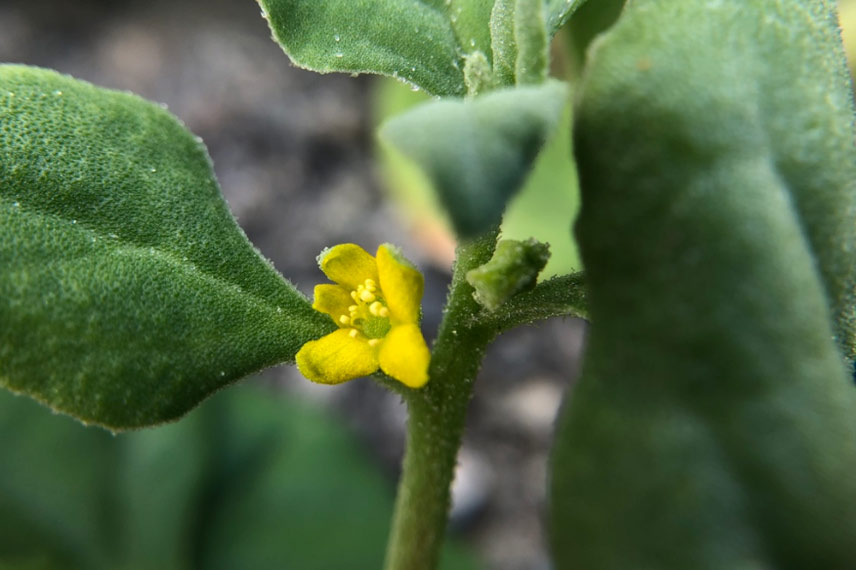
Horned tetragonia flower | © Cheng-Tao Lin – Flickr
Note that only the type species of tetragonia, namely Tetragonia tetragonioides, is cultivated.
The New Zealand spinach is both rich in water and fibre, and low in calories. The plant is also rich in vitamins C, B1, B2, PP, and in mineral salts.
Main species and varieties
Our varieties of tetragon
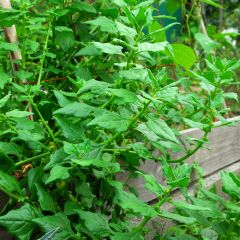
Tetragonia tetragonoides
- Flowering time July to October
- Height at maturity 30 cm
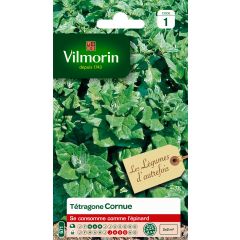
Tetragonia tetragonioides
- Height at maturity 60 cm
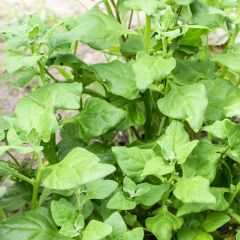
New Zealand Spinach - Tetragone - Tetragonia tetragonioides
- Height at maturity 60 cm
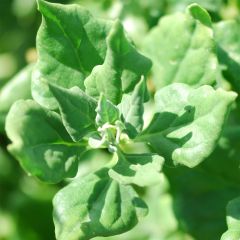
Horned Tetragon NT - Ferme de Sainte Marthe seeds
- Height at maturity 60 cm
Discover other Tetragon
View all →Available in 1 sizes
Available in 1 sizes
Available in 1 sizes
Available in 1 sizes
Available in 1 sizes
Sowing and planting of the tetragon
Know that, unlike spinach, tetragon is difficult to seed, even if you live in a region with summers marked by heatwaves. Sowing remains the only method of propagation for New Zealand spinach. It is worth noting that the plant self-seeds spontaneously, renewing itself each spring in the same location.
Where to install the New Zealand spinach?
Tetragon is a vegetable plant that thrives in all regions. It should be placed in a sunny position, even in the south of France. The location must provide soil rich in humus, cool, light, deep, and slightly acidic.
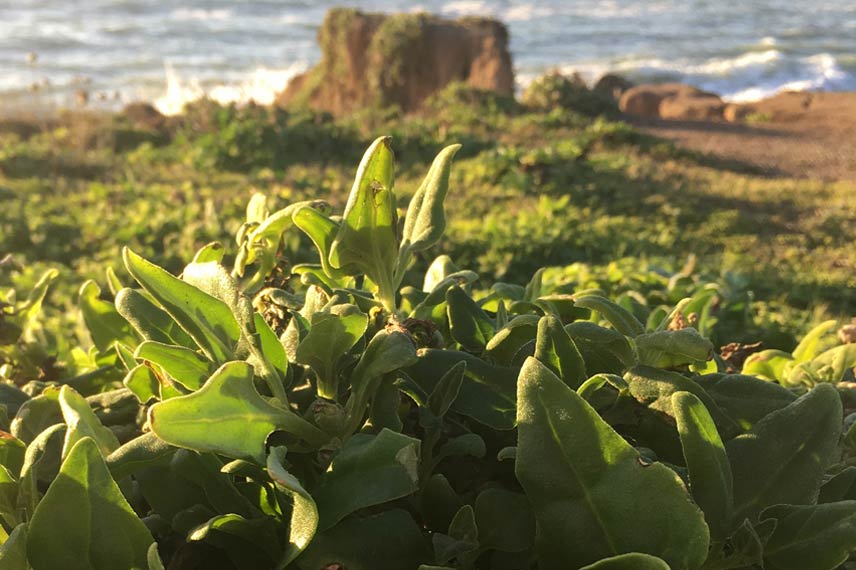
Tetragonia tetragonoides | © Jon Sullivan – INaturalist
When and how to sow tetragon?
Sowing of tetragon occurs in warm conditions between March and May. The seeds should benefit from a germination temperature of around 15°C. Indeed, it is a frost-sensitive plant that prefers well-warmed soils and cannot tolerate frost. You can also sow the tetragon seeds directly in place from mid-May until the end of June.
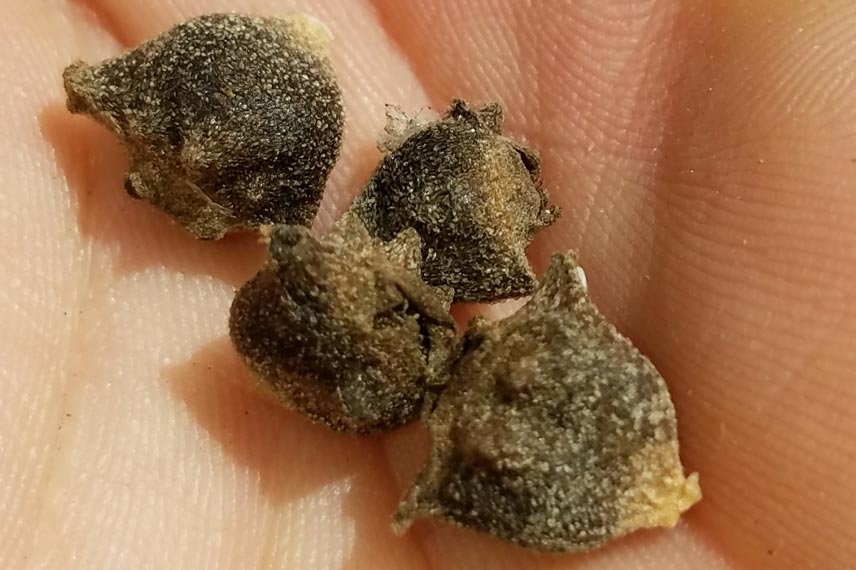
Tetragon seeds | © Benjamin J. Dion – INaturalist
Sowing in pots
- Start by **soaking the seeds** in water **for 12 to 24 hours**, which will help facilitate germination.
- **Sow** the tetragon seeds **in pots**, burying them in the substrate **2 to 3 cm deep**.
- **Water** the seedlings with a watering can.
- Once the seeds have germinated, **thin out** to keep only one vigorous plant per pot.
Sowing in open ground
- **Sow 3 or 4 seeds** of tetragon **per cluster**, always after a soaking period of 12 to 24 hours.
- Bury them in the soil **2 to 3 cm deep**, **ensuring they are spaced 70 to 80 cm apart** in all directions.
**Germination** of tetragon seeds **occurs on average within 8 to 10 days**, although it can sometimes take longer.
When and how to plant tetragon?
If you have sown your New Zealand spinach in pots, **transplant** them to their final location **around mid-May**, when the risk of frost has passed.
In the vegetable garden
- **Add** two shovelfuls of well-matured compost per m2 to the soil.
- **Maintain** a spacing of **70 to 80 cm** between each of your plants.
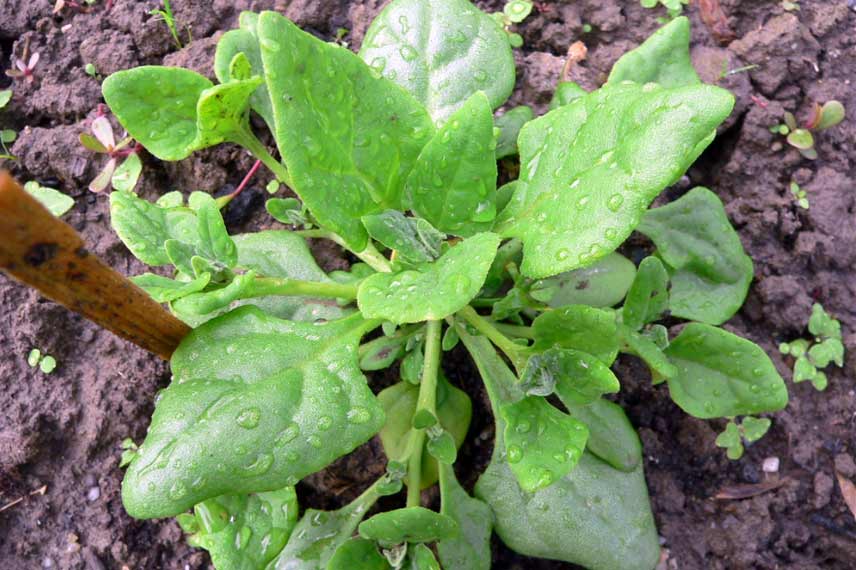 New Zealand spinach © mbalazs2 – Flickr[/caption>
New Zealand spinach © mbalazs2 – Flickr[/caption>
Tip: Preferably use peat pots for your tetragon sowing. These can be planted directly in the ground with your young plants, limiting the handling of this plant, which does not tolerate transplantation well.
In pots
If you live in an apartment with a balcony, you can transplant your tetragon pots into containers.
- **Choose** a container with a **minimum diameter of 30 cm**.
- **Place a layer of gravel or clay balls** at the bottom of the pot, and **fill** it with a substrate made of 3/4 rose soil, 1/4 enriched sand, and 2 handfuls of compost.
Harvest, storage and use
Harvesting Tetragonia Leaves
Count on an average of three months from sowing Tetragonia to start your harvests. The picking is done leaf by leaf. To harvest New Zealand spinach, cut the leaves located around the base of the plant to avoid damaging the heart of the plant, allowing it to continue developing new leaves.
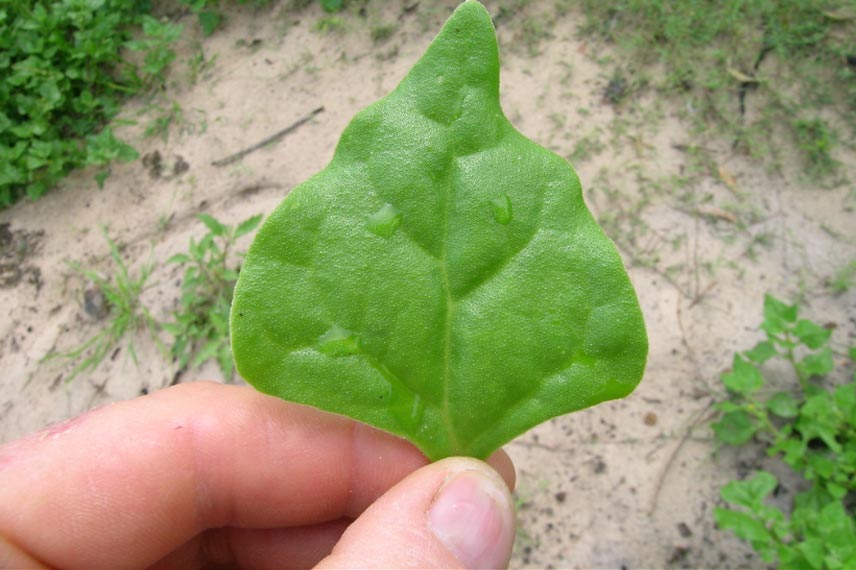
Storing New Zealand Spinach Leaves
Tetragonia cornuta leaves do not store well in the refrigerator. They tend to become limp quickly. It is better to pick them as needed, so you can consume them as soon as possible after harvest.
However, note that Tetragonia freezes very well, provided it has been blanched for 3 minutes in boiling salted water beforehand.
Harvesting Tetragonia Seeds
The flowering of Tetragonia cornuta gives way to green capsules that turn brown as they dry and then fall to the ground. Harvest them before they detach from the plant (between September and October), as soon as they start to brown. They can then be stored safely for later use during your next sowings.
Storing Tetragonia Seeds
After harvesting, dry the capsules on absorbent paper for 1 to 2 hours. Then place them in an envelope, jar, or small box, and keep everything in a dark space. The germination duration of Tetragonia seeds is generally between 3 and 4 years.
Health Benefits of Tetragonia
Nutritionally, New Zealand spinach is a very interesting health food.
To begin with, it is a great ally for weight loss diets. Its leaves are rich in water and fibre but low in calories. Like spinach, Tetragonia cornuta promotes intestinal transit and detoxification.
Moreover, this plant is rich in vitamins C, B1, B2, PP, as well as minerals, but it contains less oxalic acid than spinach. Therefore, it can be consumed by those suffering from rheumatism.
Note that Tetragonia cornuta also has anti-inflammatory and antioxidant properties, as well as beneficial effects for the skin, mucous membranes, and nervous system.
Culinary Uses of Tetragonia Cornuta
Tetragonia is a leafy vegetable with very interesting characteristics in the kitchen.
New Zealand spinach can be enjoyed raw (when its leaves are very young) or cooked. In the latter case, its taste is very similar to that of spinach, although always more iodised. However, the texture of its young raw leaves is much crunchier and fattier than that of young spinach shoots.
- When eaten raw, Tetragonia can be prepared in a smoothie or added to a salad. It pairs particularly well with tomato and sorrel.
- When cooked, New Zealand spinach lends itself to many preparations. It can be enjoyed in a gratin, sautéed in a pan, boiled and seasoned with butter and garlic, as a side dish for white meats and fish, etc.
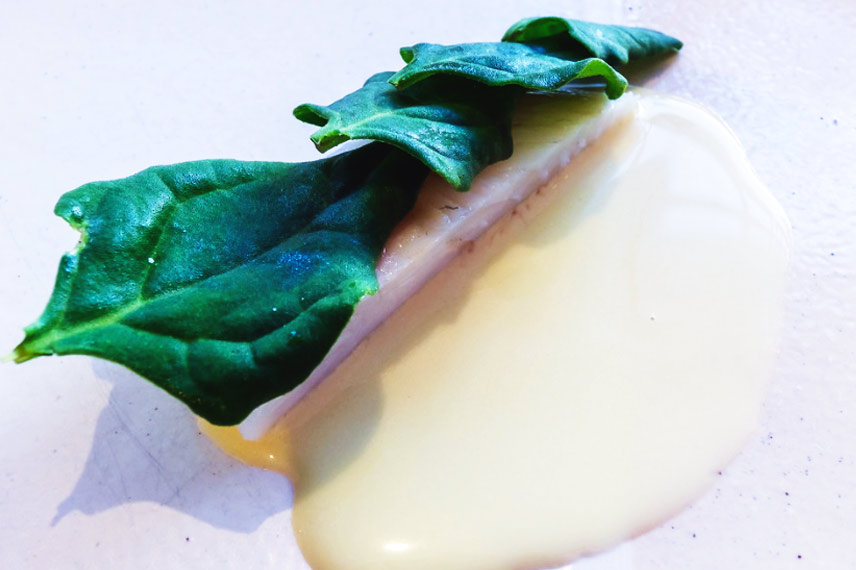
Poached turbot and Tetragonia leaves | © alh1 – Flickr
Garden Uses
Its resistance and summer vigour make Tetragonia cornuta a very interesting plant for garden maintenance. Indeed, its abundant foliage effectively replaces groundcover plants, while being edible.
In the vegetable garden, once paired with a mulch, Tetragonia helps limit the occurrence of common diseases in your vegetables (especially those of tomatoes), such as apical necrosis and grey rot.
Care and Maintenance of Tetragonous Cornuta
The tetragonous plant is quite nutrient-hungry, particularly for nitrogen and potash. A well-manured soil is therefore very beneficial for its development. In autumn (preferably), apply well-matured compost at a rate of 3 kg per m2. Start by carefully loosening the soil before applying it by raking to a depth of about 5 cm. Do not hesitate to also provide a nitrogenous fertiliser, such as dried blood or ground horn. Note that the tetragonous plant prefers neutral to slightly acidic soils (with a pH between 5.5 and 7).
Good to know: young New Zealand spinach plants can sometimes have a slow start. Keep an eye on watering, and do not hesitate to pinch the tips of their stems to encourage branching and leaf development.
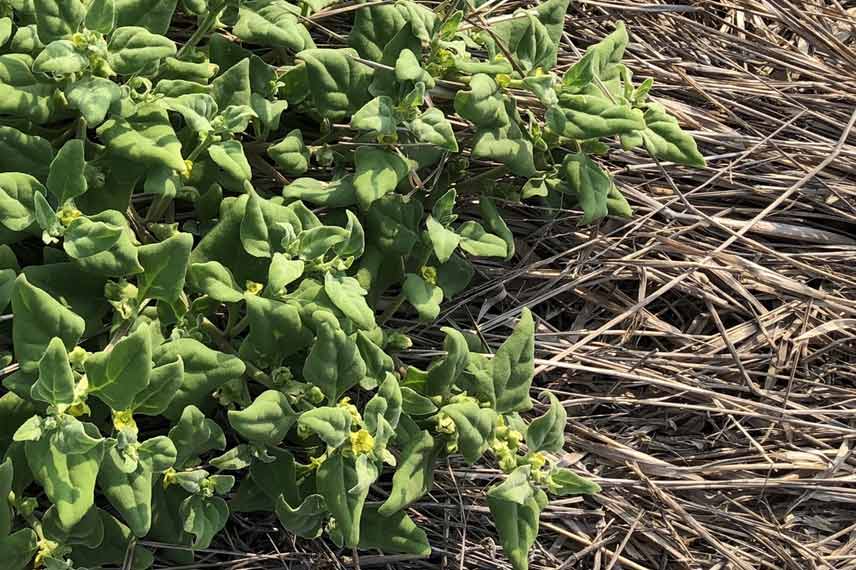
Tetragon and mulch © mutolisp – INaturalist
Be aware that despite its great resistance to heat, New Zealand spinach needs a cool soil to thrive. Once the soil is well warmed and the tetragonous plants are sufficiently developed (10 to 14 cm tall), it is recommended to mulch the soil with fine successive layers of grass clippings, ideally mixed with dead leaves. This organic mulching helps to reduce the plant’s water needs by limiting soil evaporation. This trick also drastically reduces your weeding interventions, not to mention that it nourishes the soil as the materials decompose.
Originally, New Zealand spinach is a perennial plant. However, it is a frost-sensitive plant that cannot withstand the cold of our winters. It is therefore grown as an annual in our latitudes. Once the harvest season is over, leave its stems to dry in place. It will then be able to self-seed spontaneously from year to year.
Diseases and potential pests
The tetragonous plant is not very susceptible to diseases. However, it is highly appreciated by slugs that feast on its young plants.
- To keep slugs away from your crops preventively, try attracting their natural predators, such as ground beetles, hedgehogs, toads, or even birds… Also, plant repellent vegetation around the vegetable garden, such as mustard, clover, marigolds, or blackcurrant.
- If the invasion has already begun, prioritise ecological solutions to get rid of slugs. You can opt for slug barriers, install protective cloches over the young plants, use beer traps, or even apply fern or rhubarb manure to repel them.
Associate New Zealand spinach
The most beneficial and well-known association is that of the tetragonous plant and the strawberry. Indeed, strawberry plants are renowned for promoting the development of tetragonous leaves and enhancing their flavour. Note that New Zealand spinach can also be associated with the tomato, and with any other upright plant that does not shade it. It is also associated with spinach, although the two plants are botanically completely distinct.
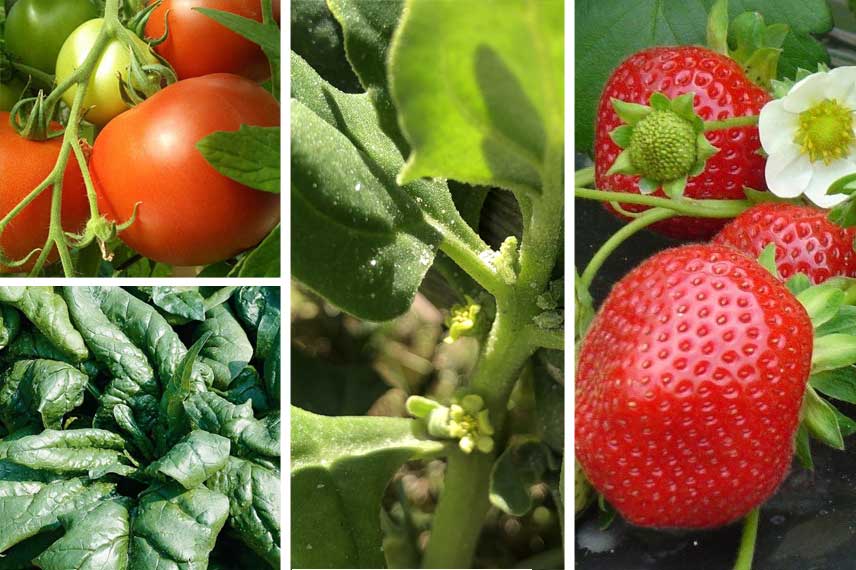
Useful resources
- To avoid confusion, also find our complete guide on the cultivation of spinach in the vegetable garden.
- Discover the section “Horn, blood & specific fertilisers” from Promesse de Fleurs to nourish your tetragonous plants.
- Read our organic care and control methods to naturally combat slugs and protect your New Zealand spinach plants.
- Subscribe!
- Contents


































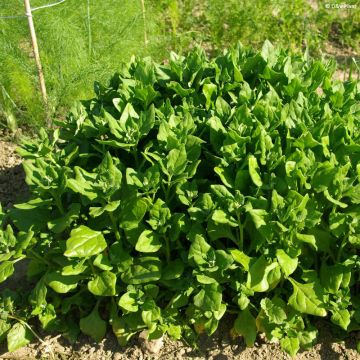

Comments